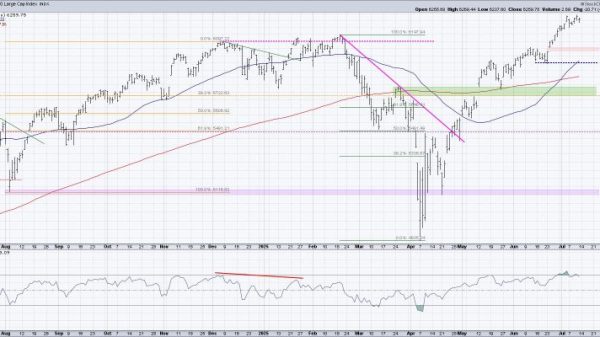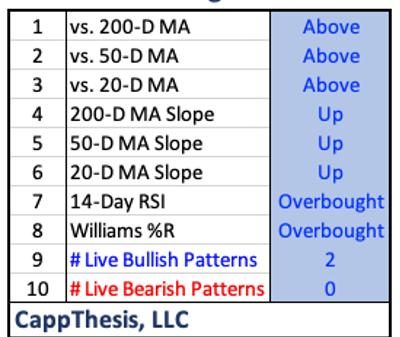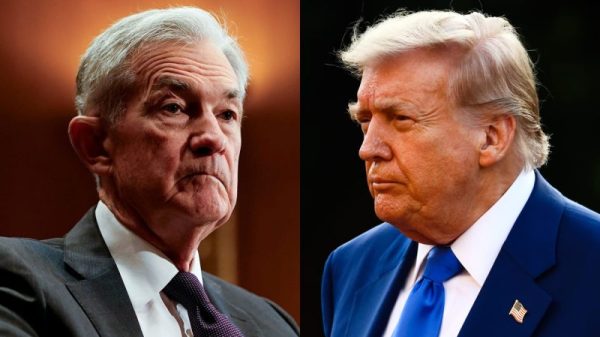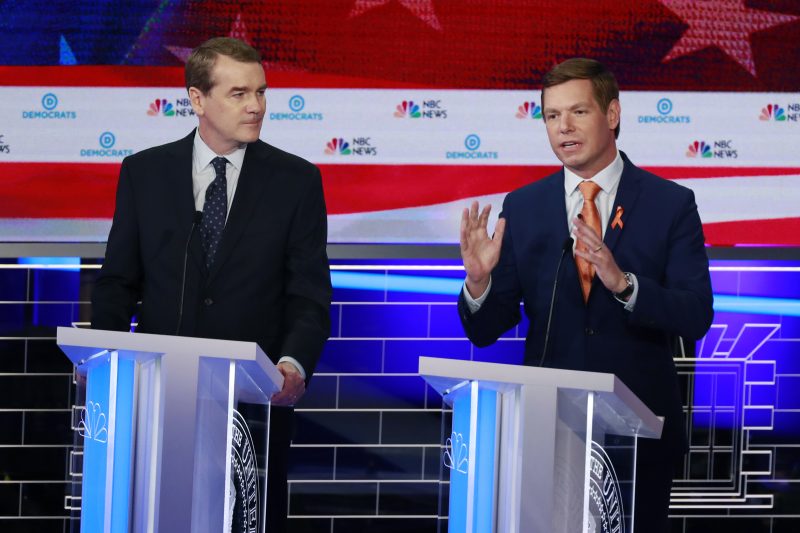Rep. Eric Swalwell (Calif.) struck the biggest moment of his bid for the 2020 Democratic presidential nomination on June 27, 2019. He did it by quoting from a Joe Biden speech in 1987 about passing “the torch” to a younger generation.
“Joe Biden was right when he said it was time to pass the torch to a new generation of Americans 32 years ago. He’s still right,” Swalwell, then 38, said in a nationally televised debate during the Democratic primary race.
Biden, then the 76-year-old former vice president, smiled at the young Turk. “I’m still holding on to that torch,” the future 46th president retorted onstage.
What seemed like a big win for Swalwell quickly fell apart and, less than two weeks later, he dropped out of the race.
Biden won the nomination. His biggest rival until the end of the 2020 Democratic primaries was Sen. Bernie Sanders (I-Vt.), who turned 78 during that campaign. Biden then defeated Donald Trump by more than 7 million votes in the popular vote in the 2020 presidential election. Rep. Nancy Pelosi (D-Calif.) remained House speaker through age 82, shepherding several major Biden initiatives into law and adding to her legacy before stepping aside in late 2022.
Experience, as Pelosi, Sanders and Biden have all said, could overcome questions about age.
Yet exactly five years after the Swalwell exchange, the worst nightmares came to pass for that young crop of Democrats. Biden’s debate performance against former president Trump confirmed the worst fears for the next generation.
There were misstatements, audible stumbles, and — most worrying of all to many Democrats — very little pushback from Biden, now 81, against a series of misstatements and mistruths from Trump, who just turned 78, and has some questioning his age and acuity.
“I mean, I think people are panic-stricken,” said Rep. Emanuel Cleaver II (D-Mo.), a 20-year incumbent who serves as a minister.
Cleaver, 79, is cautioning his younger colleagues to take a breath: “They’re panic-stricken, and I don’t think that’s a good time to think.”
Swalwell, now a 43-year-old father of three, tried to look philosophically Friday at the state of the fall general elections and the future of the nation.
“The sun came up, my kids still fought me to get out of bed, and it’s going to be okay,” he said. “We have been through a lot the last eight years. And we will get through this.”
Swalwell’s 2019 pass-the-torch moment seemed to grasp the zeitgeist of the emerging Democratic Party, which had just scored a major midterm victory that claimed the House majority with record numbers of young and diverse lawmakers riding the anti-Trump energy to a blue wave.
Those young Democrats even forced Pelosi to make concessions before granting her the votes to reclaim the speakership, including a term-limit pledge of just four more years with the gavel.
That class of 2018 quickly found other soul mates pushing for generational change, particularly among the Democratic class of 2012. That was another large, diverse group that, while it didn’t win back the majority, cut into the House GOP’s majority on the coattails of Barack Obama’s reelection win.
Together, the classes of 2012 and 2018 exude ambition. Swalwell was joined by three other 2012 classmates in running for the 2020 presidential nomination.
Among the 2018 class, five Democrats are running for Senate this year, while a couple more will run for governor of Virginia and New Jersey next year. Rep. Dean Phillips (D-Minn.), who was one of the agitators pushing Pelosi to move aside, ran a long-shot race against Biden for the Democratic nomination this year, in part hoping to spark other, more-seasoned Democrats to jump in against an incumbent.
And the 2018 class played a major role in determining the caucus’s future leadership lineup. When Democrats gathered for leadership elections after the 2018 midterms, the incoming freshmen threw much of their weight behind Rep. Hakeem Jeffries (D-N.Y.), in a highly contested race against a much longer-tenured party elder for what is considered the No. 4 leadership post.
Serving under Pelosi and Reps. Steny H. Hoyer (D-Md.) and James E. Clyburn (D-S.C.), Jeffries, first elected in 2012, was then on track to become minority leader once that older trio stepped out of leadership together at the end of 2022. Jeffries’s top lieutenant, House Minority Whip Katherine Clark (D-Mass.), 60, won a special election in 2013 and became a de facto class of 2012 member.
These two younger blocs of Democrats saw Obama, the first Black president, first elected at the age of 47, as their party’s future. It’s a sharp contrast to Republicans in Congress, where the younger and newer GOP lawmakers are, the more likely they are to be devout Trump acolytes, seeing his unabashed pugilism as their preferred brand despite being a generation or two older than them.
For young Democrats, as Obama faded from the scene, their party kept sticking with the previous generation as its torchbearers.
In 2016, Democratic voters selected Hillary Clinton, 69 at the time, a former senator and secretary of state who had been in the national spotlight since 1992. And for all the complaining from the far-left progressives about older white candidates running the party, they coalesced around Sanders — who was 74 during that campaign, a member of Congress since 1993 — as the alternative.
Once the dust settled in the House and Pelosi began reasserting her power, the party focus shifted by the summer of 2019 to the presidential race and finding the right nominee to challenge Trump.
The field grew to 20 Democrats who qualified for debates. There were rising Black senators who were stars (Cory Booker of New Jersey and Kamala D. Harris of California). There were prominent female senators (Amy Klobuchar of Minnesota and Elizabeth Warren of Massachusetts), a prominent Latino candidate (former mayor of San Antonio Julián Castro) and a prominent gay mayor (Pete Buttigieg).
But, again, primary voters went with the older, reliable hands. After some stumbles, Biden was the clear front-runner, particularly after Clyburn’s endorsement helped him win the primary in South Carolina, the most senior Black congressman delivering in a primary where about half the primary voters are Black.
And, again, the progressive left rallied behind Sanders, who was a few months removed from a serious heart attack.
Biden’s first two years in office brought some major legislative successes, and he found new allies in the Congressional Progressive Caucus as he fought for major actions to combat climate change. But the process was ugly and, despite the seeming popularity of the proposals, voters gave Democrats little credit for the agenda.
When the 2022 midterm elections went better than expected, the party got something that it had lacked for many years: a bench filled with Democrats coming into prominence.
Michigan reelected Gov. Gretchen Whitmer by a double-digit margin, while Wisconsin Gov. Tony Evers won another term by a smaller margin. In Pennsylvania, Gov. Josh Shapiro won in a landslide, while Maryland made Wes Moore its first Black governor, also in a rout. Sen. Raphael G. Warnock (D) has won twice, in 2020 and 2022, in Georgia, the first Black Democratic senator from the Deep South.
And, at that same time, Pelosi bowed out of leadership, prompting Hoyer, now 85, and Clyburn, 83, to join her. Together, those three octogenarians had ruled the Democratic caucus for 17 years.
“We fixed it, we fixed it, and they helped fix it,” Cleaver recalled Friday of how the top three made way for Jeffries, Clark and Rep. Pete Aguilar (D-Calif.) to take over.
When Biden sent word that he would run for another term, party leaders in Congress applauded. All of the Democrats’ other rising stars stood down, perhaps thinking 2028 would give them time to hone their image for the national stage.
Sanders has been loyal to Biden, as he barnstormed Wisconsin the past few days trying to gin up excitement for the president in a key battleground state. One of his more prominent supporters, Rep. Ro Khanna (D-Calif.), who ran as an anti-establishment progressive and defeated an incumbent in 2016, has become one of Biden’s top surrogates to youth voters on college campuses across the nation — a key voting bloc that has been wary of voting for Biden.
Approached by reporters on Friday, Khanna, 47, found little good to say about Biden’s debate performance. He described his approach to courting young voters as one that mentions little about the incumbent.
“I can vouch for the policies that our party stands for. You know, when you’re president, you have a team of 4,000 people,” he said. “And our party is about providing affordable housing, capping rents, about making sure that we’re going to increase wages, about bringing back manufacturing. Donald Trump is about tax breaks for the very, very wealthy.”
Sen. Ben Cardin (D-Md.) is one of the few politicians whose career predates Biden, winning a state legislative seat in 1966 four years before the president won his first race for county council.
Now 80, Cardin decided early last year to not run for reelection and retire after three terms in the Senate, a decision that is the most personal one for politicians.
“Each person makes their own decision,” he said.
He saw the debate and remains confident Biden can do the job, especially when Trump is the alternative.
It’s now up to the voters to decide if Biden made the right choice to run again.
“I think each person has to judge that for themselves,” Cardin said. “And I am very comfortable that the choice is clear to me.”





























